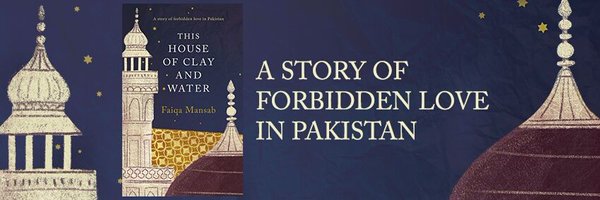
Some how, I have a predilection for stories set in Pakistan as I find in them a curious mix of awesome liberal ideas and absurdly medieval ones; total feminism and extreme male domination; rigid religious beliefs and the fluid, mystic Sufi practices .
One of the first books I read was My Feudal Lord by Tehmina Durrani published in 1991. It had politics, religion , feminism and other social issues ; a heady cocktail.
This book, “This House of Clay and Water” definitely reminded me of Tehmina Durrani.

The main character Nida is a highly intelligent woman married into an affluent political family. She had everything a typical woman in Pakistan would want; a secure family, affluence and social status. She had full liberty to pursue her interests as long as she was okay with maintaining a facade of what was considered politically and socially correct behaviour in public. But Nida was looking for genuine love and wanted to break away from any kind of sham or deceit. The story is about her life meandering along from being a respected lady in a neo-feudal society to a qalandar in a dargah.
The entire story is set in Lahore and every chapter, brings to life the sights and sounds of the city. Nida in her quest for freedom and love comes across Sasha and Bhanggi in a Dargah. Sasha is a middle class housewife craving for good life style and wealth. She is ready to consort with rich men to fulfill her desires. She assumes that any man would be happy to dump his dull housewife for a smart lady like her and she finds herself sadly mistaken. Staying away from home and neglecting of her daughter results in other tragic events . One fine day she meekly chooses the path of a believer accepting the patriarchal rules and all. Basically, it is a weak character looking for a short cut to love and liberation , but goes into a kind of self-imposed imprisonment when challenged by the circumstances . The unpleasant fact is most of us are like that.

Daata Sahib Dargah ,Lahore, where the story starts and ends.
Bhanggi is a hijra, the lowest of the low-borns in an unjust society. He seeks refuge in Daata Sahib Dargah, more for physical security rather than for spiritual quest. Nida and Bhanggi are attracted to each other as two souls yearning for genuine affection and acceptance. There was no way the society would accept their relation in whatever form.
Zoya is the gentle book-loving daughter of Sasha , who is treated by her own mother as a step-daughter. It is absolutely heartrending to read these chapters , one part wherein ,I had to skip complete paragraphs to avoid the pain.
I would like to remember the character from just one sentence that I can relate so well to:-
“Zoya was reading a brand-new book. Nothing compared to the excitement of opening a new book.What adventures awaited her? Which characters would nestle into her heart and comfort her at night ? There was so much promise in the simple act of opening a book…..”
The male characters lack depth and details and are there just to complete the picture.
A story full of pathos but very much thought provoking and there is a gentle humor at places that only highlights the feeling of sadness that one senses all through.
